Pre 20th Century
Pre 20th Century 1500s - 1890s
Designed by Barbara Reyes, Herb Delute, and Judy Patacsil
From 1565-1815, Filipinos were instrumental to the Manila-Acapulco Galleon Trade. Many jumped ships off the coast of California and Louisiana. In 1896 the Katipunan leaders revolted against Spain. The first Philippine Republic was formed with President Emilio Aguinaldo. The independence was short lived. U.S. claimed the Philippines leading to the Philippine-American War.
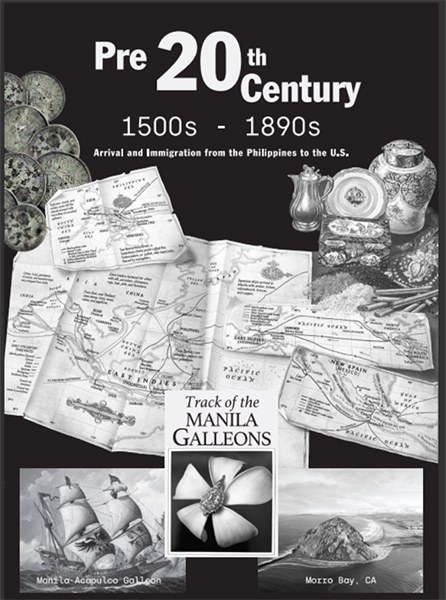

Filipino Resistance to Spanish Conquerors
Filipinos resisted the Spanish conquerors from the beginning. Early in the Spanish colonization, Magellan was killed by a Filipino native, Lapu-Lapu.
Carlos V. Francisco’s Mural
Filipino Struggles Through History

Filipinos in the Manila-Acapulco Galleon Trade
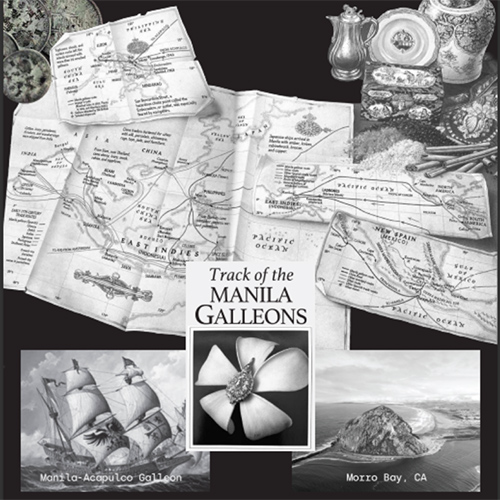
Barbara Reyes

Courtesy of
Judy Patacsil
Filipino's in Early Louisiana
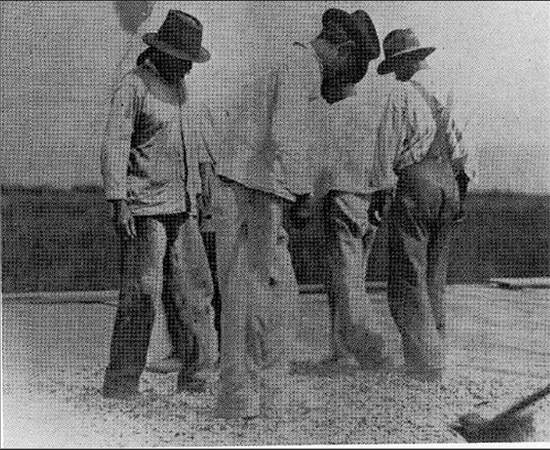
Filipino Cajuns
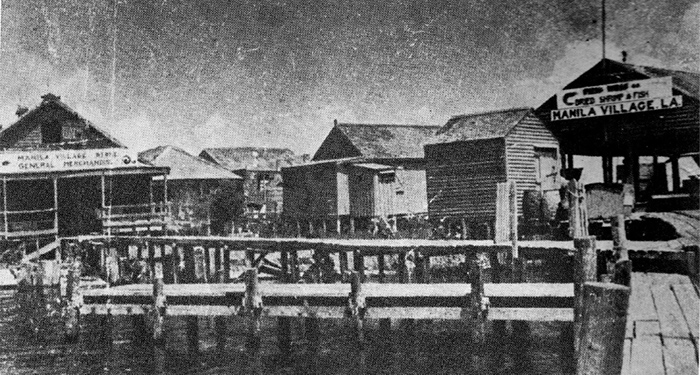
Manila Village, Bayou of Louisiana

Filipinos: Forgotten Asian Americans
Filipino Oppression Under Spanish Rule

Carlos V. Francisco’s Mural,
Filipino Struggles Through History
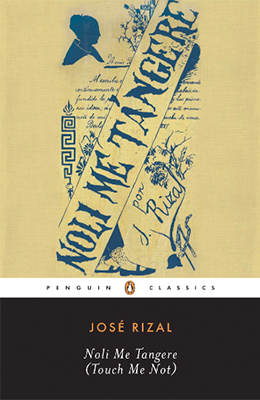
Courtesy of Judy Patacsil
Filipino Oppression Under Spanish Rule

Carlos V. Francisco’s Mural,
Filipino Struggles Through History
Philippine American War
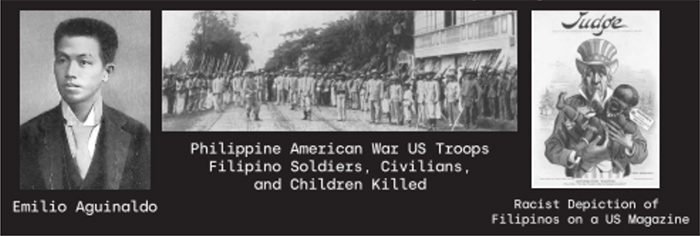
Courtesy of Barbara Reyes
Pre 20th Century Niche
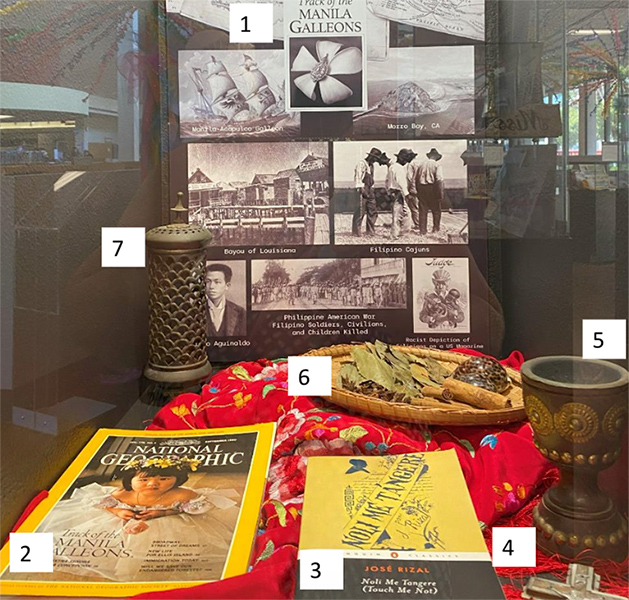
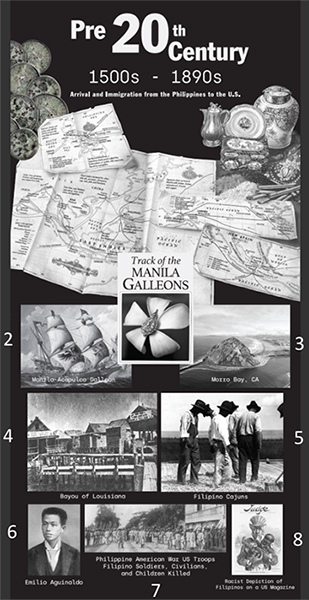
Title
- Poster with 8 pictures
- Track of the Manila Galleons
- Manila-Acapulco Galleon
- Morro Bay, CA
- Bayou of Louisiana
- Filipino Cajuns
- Emilio Aguinaldo
- Philippine American War
- Racist Depiction of Filipinos on a US Magazine
- National Geographic, 1990, “Track of the Manila Galleons.”
- Nole Me Tangere (Touch Me Not)
- Cross
- Spices
- Chalice
Courtesy of:
- Barbara Reyes, FANHS
- National Geographic, 1990, “Track of the Manila Galleons.”
- National Geographic, 1990, “Track of the Manila Galleons.”
- Barbara Reyes, FANHS
- Marina Espina Collection, Filipinos: Forgotten Asian Americans
- Marina Espina Collection, Filipinos: Forgotten Asian Americans
- Barbara Reyes, FANHS
- Barbara Reyes, FANHS
- The Forbidden Book: The Philippine American War in Political Cartoons
- Barbara Reyes, FANHS
- Dr. Rose Rizal, Judy Patacsil
Want to Learn More About This Exhibit?
Check out our presentation slide show to get an in-depth look at the history of Filipinos in the military.
Schedule A Tour
Schedule a tour today to learn more about Filipino and Filipino American history in South Bay.

